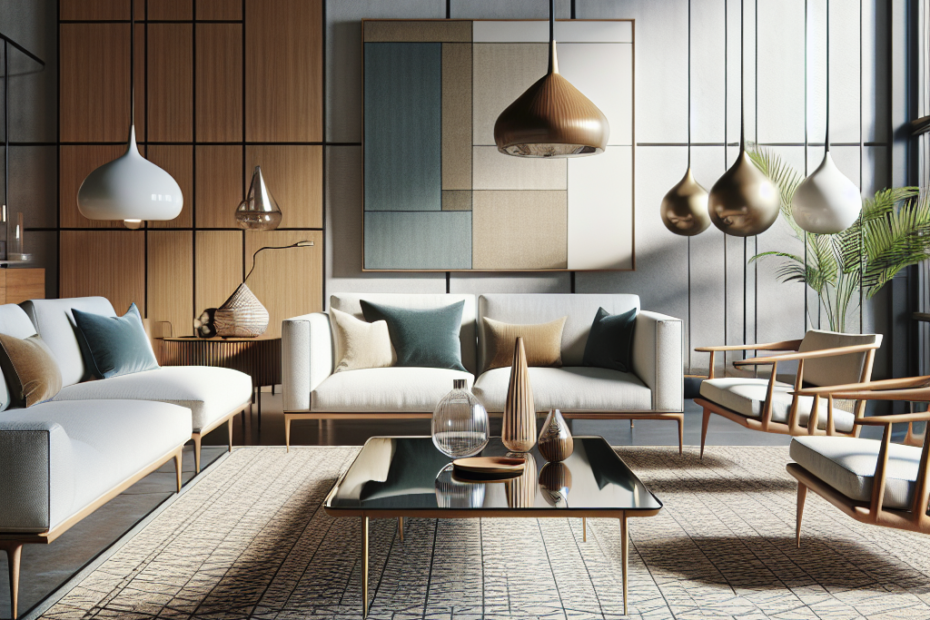“`html
The Essentials of Clean Lines in Mid-Century Modern Interiors
When it comes to timeless elegance in interior design, few styles can rival Mid-Century Modern. This design era, which flourished from the mid-1940s to the late 1960s, continues to influence interiors today. A hallmark of this style is the concept of clean lines, which encapsulate simplicity, functionality, and beauty. In this blog post, they will explore the essentials of clean lines in Mid-Century Modern design and how they are applied to create harmonious and inviting interiors.
The Concept of Clean Lines in Mid-Century Design
Clean lines are more than just a design element in Mid-Century Modern interiors; they are the backbone of this design philosophy. This style emphasizes streamlined forms and lack of unnecessary ornamentation, allowing the natural beauty of materials and shapes to shine. Achieving clean lines involves simple geometric forms, smooth edges, and a balanced use of space that provides functionality without compromising the aesthetic appeal.
Why Clean Lines Matter
In the bustling world of interior design, clean lines bring a sense of order and clarity. They make spaces feel more open, organized, and visually pleasing. Research by the National Library of Medicine shows that environments with less clutter and more structured elements can have a positive impact on mental well-being. By embracing the clean line approach, designers can create serene and timeless spaces.
Characteristics of Mid-Century Modern Interiors
- Minimalism: Use of minimal ornamentation and a focus on function.
- Natural Materials: Incorporation of wood, metal, and glass.
- Open Spaces: Plan layouts that enhance flow and connectivity.
- Functional Furniture: Designs that serve multiple purposes and are ergonomic.
- Neutral Colors: Predominant use of whites, beiges, and other subdued tones.
The Role of Furniture in Clean Lines
Furniture plays a pivotal role in achieving the aesthetic of clean lines in Mid-Century Modern interiors. Iconic pieces such as the Eames Lounge Chair and the Noguchi Table exemplify the marriage of form and function. They avoid decorative excess and instead highlight material and craftsmanship. According to Statista, the U.S. household furniture market generated over $113 billion in revenue in 2022, demonstrating the continual demand for furniture that blends innovation with simplicity.
Table: Essential Elements of Mid-Century Modern Design
| Element | Description |
|---|---|
| Simplicity | Focuses on simple forms and minimalistic design. |
| Functionality | Designs prioritize utility and efficiency. |
| Balance | Harmonious use of space and materials. |
| Contrast | Use of contrasting textures and tones to add depth. |
| Texture | Incorporation of various materials to create visual interest. |
Embracing Modern-Day Trends
Despite being rooted in the past, Mid-Century Modern design elements, such as clean lines, continue to adapt and thrive. Modern trends have embraced these principles by integrating with sustainable practices and technology. Designers today often draw inspiration from Mid-Century icons, merging them with contemporary innovations to suit modern lifestyles. This ongoing evolution highlights the versatility and enduring appeal of clean lines in design.
Key Takeaways
- Clean lines are essential in creating simplicity and elegance in Mid-Century Modern interiors.
- These lines enhance functionality and focus on minimalism, improving mental well-being.
- Furniture with clean lines showcases a union of form and function pivotal for this style.
- The continued adaptation of Mid-Century principles demonstrates their relevance and timelessness.
FAQ Section
- What are clean lines in Mid-Century design?
Clean lines refer to the streamlined forms with minimal ornamentation that emphasizes simplicity and functionality in Mid-Century Modern design.
- Why is Mid-Century Modern design still popular?
Its timeless appeal, focus on functionality, and integration into contemporary interiors keep it relevant and desired.
- What materials are commonly used in these designs?
Natural materials such as wood, glass, and metal are frequently used to highlight texture and form.
- How can I incorporate clean lines into my home?
Use furniture with simple forms, neutral color schemes, and eliminate unnecessary decorative elements for a clean look.
- Can clean lines be incorporated into other design styles?
Yes, the principles of clean lines can complement many design styles, adding simplicity and elegance.
“`
